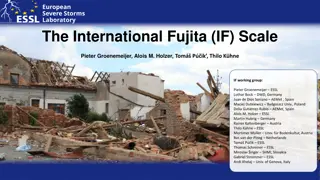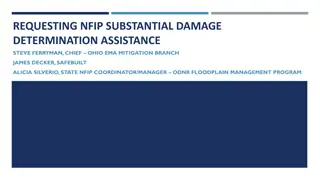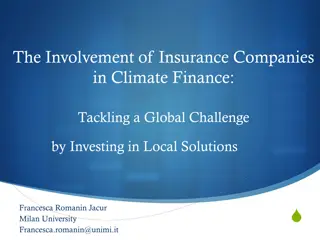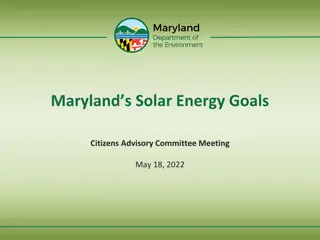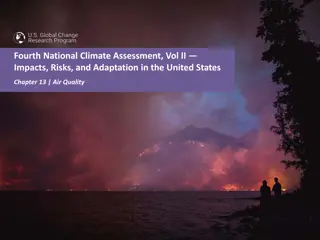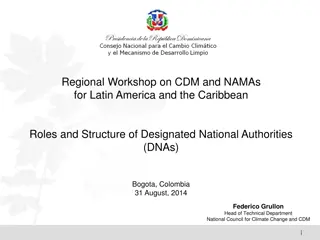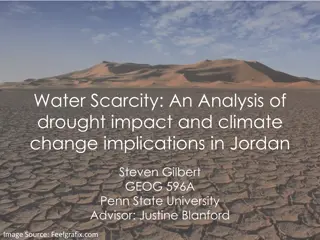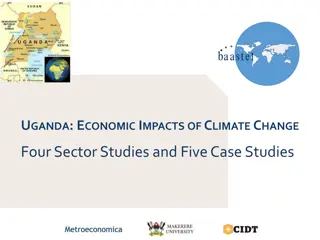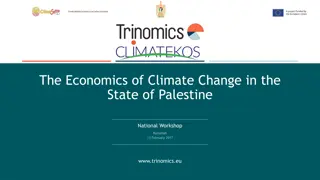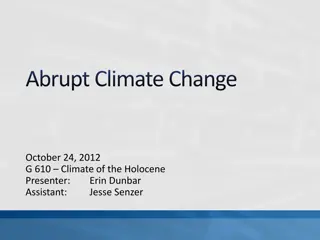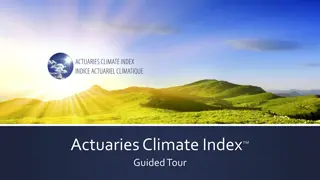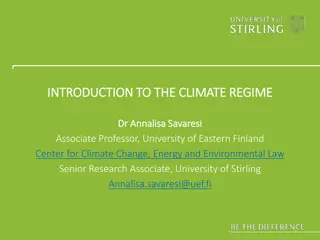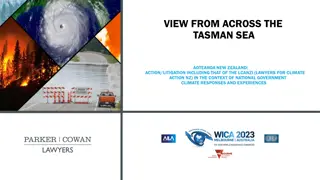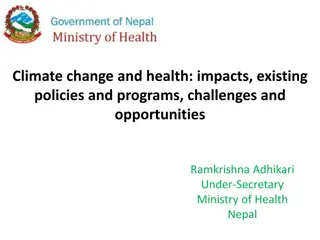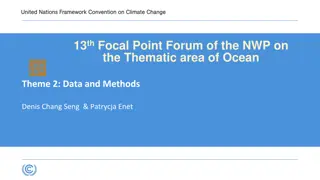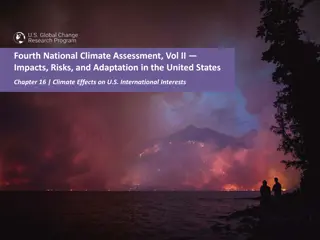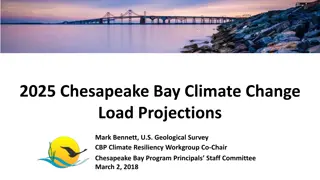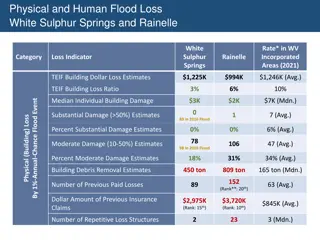Warsaw International Mechanism for Loss and Damage: Addressing Climate Change Impacts
The Warsaw International Mechanism for Loss and Damage focuses on addressing climate change impacts, including extreme events and slow-onset events, in vulnerable developing countries. Through its Executive Committee, the mechanism aims to enhance dialogue, understanding, and action to support those affected. It encompasses strategic workstreams to facilitate cooperation on various challenges such as slow-onset events, non-economic losses, and comprehensive risk management approaches.
Download Presentation

Please find below an Image/Link to download the presentation.
The content on the website is provided AS IS for your information and personal use only. It may not be sold, licensed, or shared on other websites without obtaining consent from the author. Download presentation by click this link. If you encounter any issues during the download, it is possible that the publisher has removed the file from their server.
E N D
Presentation Transcript
Warsaw International Mechanism for Loss and Damage associated with Climate Change Impacts Workshop of the Koronivia Joint Work on Agriculture 49thSession of the Subsidiary Body for Scientific and Technological Advice, 03 December 2018 Executive Committee of the Warsaw International Mechanism for Loss and Damage
Loss and damage associated with climate change impacts Slow onset events Extreme events DROUGHT
What are the Warsaw International Mechanism & its Executive Committee? WARSAW INTERNATIONAL MECHANISM FOR LOSS & DAMAGE To address loss and damage associated with impacts of climate change, including extreme events and slow onset events, in developing countries that are particularly vulnerable to the adverse effects of climate change (Decision 2/CP.19) THREE FUNCTI ONS: Enhancing dialogue, coordination, coherence, synergies Enhancing understanding Enhancing action and support E X E C U T I V E C O M M I T T E E Guides the implementation of the functions of the Mechanism. Composed of 20 members Expert groups, technical panels, etc. To help execute the work of the Executive Committee 3
Strategic workstream (a): Enhanced cooperation and facilitation in relation to slow onset events SOEs Database with more than 160 initiatives working to avert, minimize and address slow onset events and related impacts; SOE expert group: to improve the knowledge base on and develop recommendations for approaches to addressing SOEs;
Strategic workstream (b): Enhanced cooperation and facilitation in relation to non-economic losses NELs expert group: to develop inputs and recommendations to enhance data on and knowledge of reducing the risk of and address NELs; NELs can be individual (e.g. loss of life, degraded health, migration), societal (e.g. loss of territory, cultural heritage, indigenous knowledge, societal/cultural identity) or environmental (e.g. loss of biodiversity and ecosystems services).
Strategic workstream (c): Enhanced cooperation and facilitation in relation to comprehensive risk management approaches CRM technical expert group: to enhance knowledge and understanding of comprehensive risk management approaches; Compendium on comprehensive risk management approaches; Fiji Clearing House for Risk Transfer Risk assessment Risk reduction Financial risk transfer Risk retention Transformational approaches Enabling environment
Examples from the Compendium on CRMs Risk Assessment: Malawi Spatial Data Platform (MASDAP) GEONODE launched in 2012. It helps identify risks and strengthens disaster risk management effort; Financial Risk Transfer: The Philippine Crop Insurance Corporation, a government-owned entity, provides insurance protection to farmers against loss arising from natural calamities, plant diseases and pest infestation of their crops.
Strategic workstream (d): Enhanced cooperation and facilitation in relation to human mobility, including migration, displacement and planned relocation Task Force on Displacement (TFD): to develop recommendations for integrated approaches to avert, minimize and address displacement related to the adverse impacts of climate change;
Strategic workstream (e): Enhanced cooperation and facilitation in relation to action and support Invite relevant actors to consider how to facilitate or enhance, as appropriate, the availability of finance relevant to loss and damage at the regional and national levels; Develop actions to address capacity- building for addressing loss and damage; Invite relevant actors to continue developing insurance mechanisms, for example diversified agriculture insurances as a risk transfer mechanism that can help farmers Finance Technology Capacity-building
Collaborative partnership and knowledge-sharing platform Fiji Clearing House for Risk Transfer, using cutting edge artificial intelligence to bridge world-wide supply of expertise and knowledge demand
For further information on loss and damage under the UNFCCC Visitwww.unfccc.int/6056 Contact the Executive Committee at loss-damage@unfccc.int Thank you!




